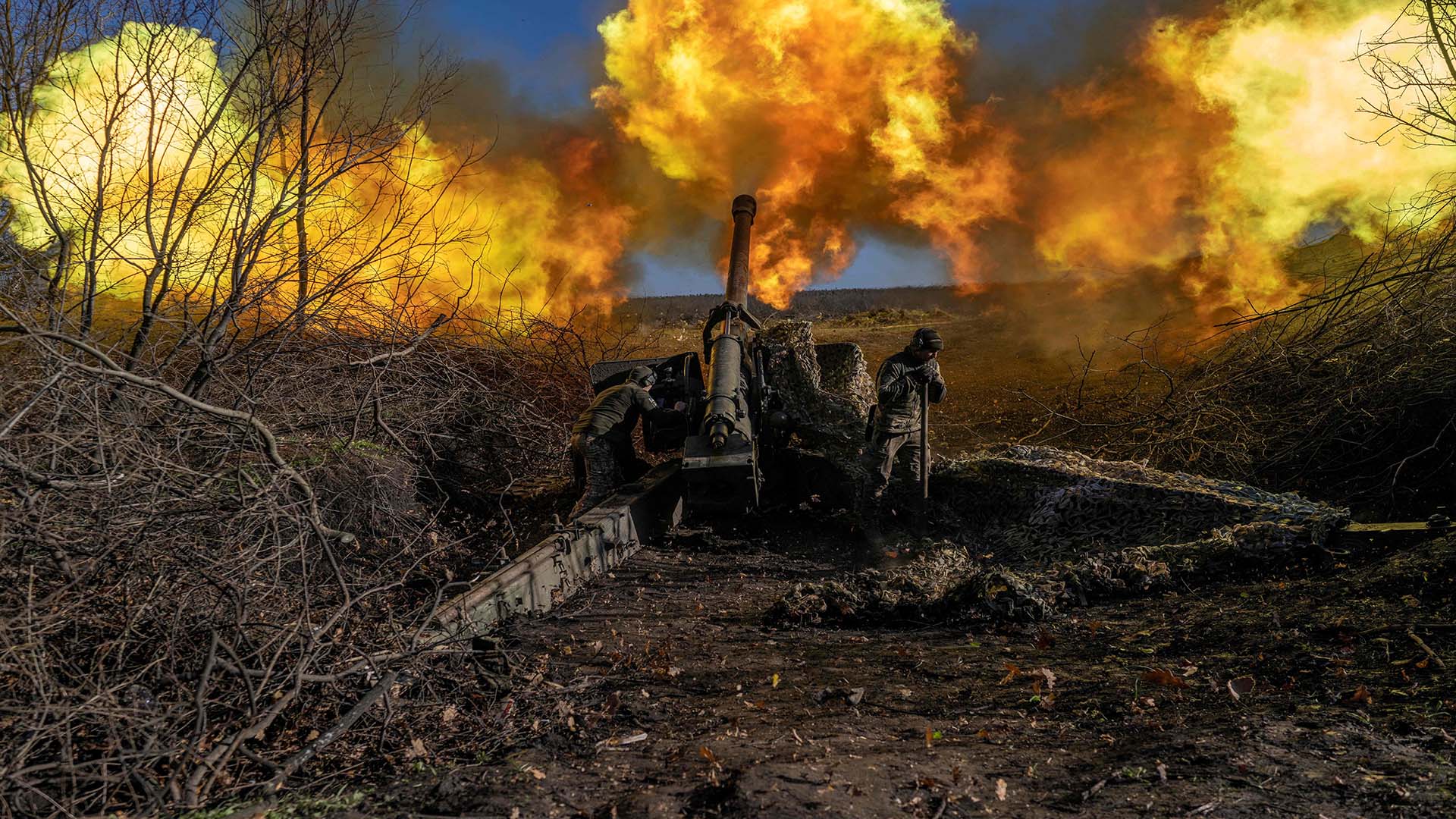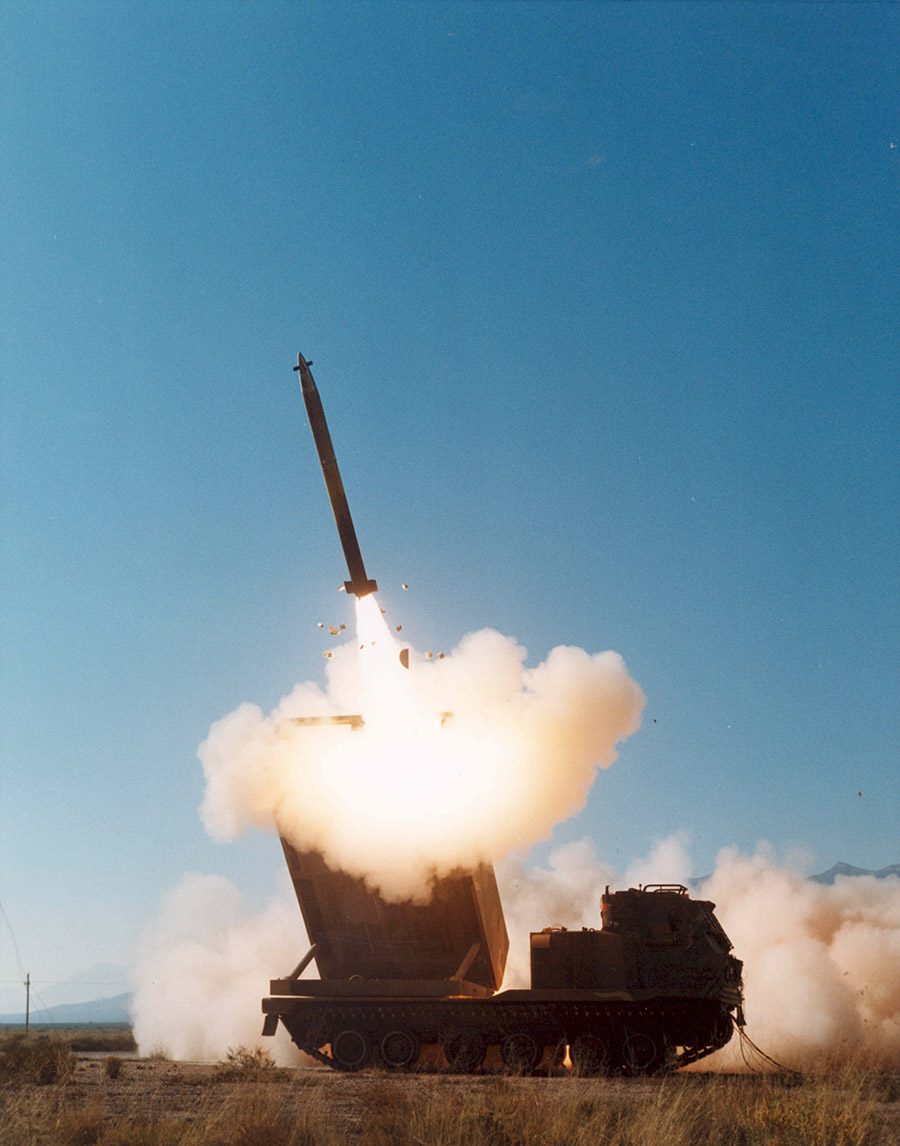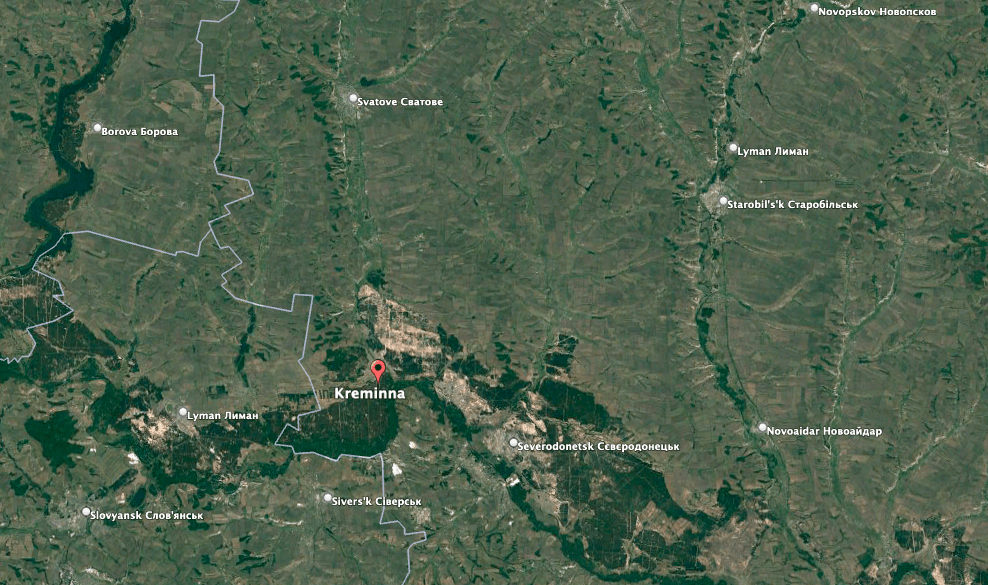Even before Russia launched its all-out invasion of Ukraine, artillery has played a large role in the conflict there, dating back to shortly after Moscow’s initial incursion into the Donbas back in 2014. The use of artillery of course drastically increased after Feb. 24, with Russia able to fire off far more rounds than Ukraine thanks to an overwhelming advantage both in the numbers of tubes and shells available.
But as both sides continue to fire thousands of artillery rounds at each other every day, Russia’s vast numerical superiority is diminishing, a senior U.S. military official told reporters, including from The War Zone, Tuesday morning.

“The Russian ability to outpace the Ukrainians in artillery is nothing new,” said the official, speaking on condition of anonymity. “That has decreased over time in terms of the ratio at which the Russians have been able to out-shoot the Ukrainians. Part of that is probably due to Russian munitions numbers. It’s also due in part to Ukrainian effectiveness with the employment of their artillery and some of their systems. The ability of the Ukrainians to identify Russian artillery systems and Russian radars has been pretty effective and they’ve been combining the use of not just their tube artillery, but as you know, the [M142 High Mobility Artillery Rocket Systems, or] HIMARS and the employment of [Guided Multiple Launch Rocket System, or] GMLRS to get after the Russian artillery effectiveness.”

The other piece to the equation, the official said, is the types of artillery being used by Ukraine.
While the U.S. and allies have provided some 350 howitzers – including 142 155mm and 36 105mm howitzers from the U.S. alone – Ukraine also employs old Soviet artillery using 152mm and 122mm rounds.
And therein lies a conundrum of sorts for Ukraine.
All told, the U.S. alone has provided more than one million rounds of howitzer ammunition, including up to 903,000 standard 155mm howitzer rounds as well as 3,000 M982 Excalibur guided rounds, 7,000 Remote Anti-Armor Mine System (RAAMS) projectiles, and 180,000 105mm howitzer shells.
But Ukraine has more 152mm tubes than 155mm tubes, with less ammunition for them, something it is attempting to address with newly launched domestic production of an undisclosed number of 152mm rounds.
Ukroboronprom, the Ukrainian state defense production agency, previously said it established the production of 122mm and 152mm artillery shells, as well as 120mm mines.
“They noted that these shells have been successfully tested and are manufactured using NATO technology,” according to Ukrainian Pravda.
“Production is distributed at various facilities, including those belonging to partner countries. Ammunition produced by Ukroboronprom should reduce the dependence of Ukrainian artillery on supplies from abroad, where stocks of shells and mines of Soviet calibers are gradually running out.”
“The stockpiles of those munitions, depending on the type, varies,” said the senior U.S. military official. “We certainly are keeping an eye on this. And our Ukrainian partners talk to us clearly about their employment.”
But even with so many 155mm rounds provided to Ukraine by the U.S. and its allies, the supply is not unlimited and there is a scramble to feed the need of both sides as they burn through shells at an unsustainable pace. That has the U.S. and Russia each turning to allies on the Korean peninsula for more shells. Pakistan has been another source for Ukraine via its NATO backers. You can read our full report on that unique arrangement here.
Ukraine, however, is at least attempting to temper the number of shells it fires, the senior U.S. military official said.
“We establish in our military something called a controlled supply rate,” said the official. “And the Ukrainians in this case have done similar things. And what that does is it allows you to manage your total ammunition supplies, with a view that if you go above the control supply rate, it may impact you down the road. But again, you plan against some of that.”
Speaking of massive artillery volleys, the senior U.S. military official said that the remake of All Quiet On The Western Front, released by Netflix last month, brings to mind what is taking place in Ukraine now, especially in Bakhmut.

“There were some photos this week, or over the weekend, kind of giving an indication of the way things look – I think that it was particular to Bakhmut – but if you look at the way that looks, it looks very similar to the way things did back in World War I,” the official said. You can read our report from yesterday here on the trench warfare that is being waged there.
The official continues, stating “You have these two sides that are facing off. They’re attempting to pummel each other with artillery. They use the artillery to provide them an opportunity to move people forward. But then once they get to that spot, the other side is trying to do the same. I’m not supposed to give any endorsements out there … but I watched the remake of All Quiet On The Western Front over the holidays … which was really, really well done. And all I could think while I was watching that … [was] I’ve been around for a while [and] like my peers have been under fire before. But I don’t think we can compare [that] to what Ukrainians are going through right now. And if you look at All Quiet On The Western Front, and you see that and the devastation in a movie, and then you transpose that into what’s going on day to day, on the Ukrainian battlefield, it’s pretty staggering.”
Before heading into today’s news from Ukraine, The War Zone readers can get caught up on our previous rolling coverage here.
The Latest
The senior U.S. military official on Tuesday also gave a more detailed than usual Pentagon assessment of the current battlefield situation for both sides.
In the north of Ukraine, near Kharkiv, there is still “pretty heavy fighting along that line,” the official said.
In addition, “the P66 Highway which runs from Svatove down to Kremmina largely has become the frontline trace of both Ukrainian and Russian forces.”

Russian forces are “building pretty significant defensive positions in that portion of the battlespace. And then as you move further out, towards Lysychansk, and then continue to move further south, those lines have not changed dramatically.”
The fighting in Bakhmut, said the official, “has been very intense and we’ve seen over the past several days, in fact, positions have changed on both sides … We’ve seen this back and forth now for weeks between the Russians and the Ukrainians in the vicinity of Bakhmut and really in the Donetsk Oblast.”
“There’s a lot of significance about Bakhmut,” the official said in response to a question from The War Zone. We recently covered the ongoing battle here. “First of all, it’s a pretty decent intersection of road and rail. And so from a logistic standpoint, and the ability to press off, Bakhmut offers an opportunity to go in a bunch of different directions.”
There has been “no significant fighting in the Zaporizhzhia Oblast,” said the official, adding that the Pentagon has no news to share about reports that Russians are departing the Zaporizhzhia Nuclear Power Plant, Europe’s largest.
“If that nuclear power plant was handed over, responsibly, that’d be a great thing,” the official said.
In the Kherson Oblast, “the Ukrainians now own all the ground on the west side of the Dnipro River,” where “significant demining operations are occurring by Ukrainian forces. And the Russians continue to shell to the west side of the river as well.”
Each side has “thousands of troops” stationed on their current respective banks of the river, the official said.
In the maritime domain, “we have seen around three [Russian] ships that are underway in the Black Sea, including Kalibr-capable ships.”
In the air, both sides are flying fewer sorties, the official said, perhaps in part because of poor weather.
Here are some key takeaways from the latest Institute for the Study of War assessment:
- The Russian-claimed capture of several small villages around Bakhmut on November 27 and 28 does not portend an imminent Russian encirclement of Bakhmut.
- Recent Russian force deployments to Belarus in November 2022 are likely part of a Russian effort to augment Russian training capacity and conduct an information operation.
- Russian milbloggers widely criticized the Russian Ministry of Defense’s (MoD) decision to place severe customs limits on the import of dual-use goods, indicating a continued and pervasive discontent with the Russian MoD’s conduct of the war in Ukraine.
- Russian forces are likely preparing to launch a new wave of missile strikes across Ukraine in the coming week, but such preparations are likely intended to sustain the recent pace of strikes rather than increase it.
- Russian forces continued efforts to defend against Ukrainian counteroffensive operations around Svatove as Russian sources reported that Ukrainian troops continued counteroffensives west of Kreminna.
- Russian forces made incremental gains south of Bakhmut.
- Russian forces continued to strengthen fortified positions and establish security measures in eastern Kherson Oblast.
- Ukrainian forces continued to strike Russian military assets and along critical logistics lines in southern Ukraine.
- Russian forces continue to face issues with adequate training and equipment and challenges with morale and discipline as Russian military failures have significant domestic social impacts.
- Russian occupation authorities continue their efforts to facilitate the integration of educational systems in occupied Ukraine into the Russian system.
One great advantage Ukraine has is the number of nations willing to support it with arms and other badly needed supplies.
Both the U.S. and NATO members, for instance, have recently discussed providing Patriot air defense systems to Ukraine, something you can read more about here.
On Tuesday, Ukraine also received additional good news on the arms front. The first French-made LRU (Lance-Roquette Unitaire) multiple launch rocket system (MLRS) has arrived in Ukraine. The country already possesses a version of the M270 MLRS, the U.S.-produced HIMARS, and the German-produced MARS II MLRS systems, in its inventory. All four systems can fire the same GMLRS munitions.
European robotics and autonomous systems developer, Milrem Robotics, and the German defense company Krauss-Maffei Wegmann (KMW) have signed a contract to deliver 14 THeMIS unmanned ground vehicles (UGV) to Ukraine, Milrem Robotics announced Tuesday.
“Of the 14 vehicles, seven will be configured for casualty evacuation (CASEVAC) and are scheduled to be delivered by the end of this year,” the company said. “The other seven, to be delivered in the second quarter of 2023, will be configured for route clearance with payloads from the French defense manufacturer CNIM Systèmes Industriels.”
The effort is being funded by the German Defense Ministry.
Also on Tuesday, Jaro Nad, the Defense Minister of the Slovak Republic, announced that 30 Slovak BMP-1 infantry fighting vehicles were donated to Ukraine. It’s part of a multi-nation effort to provide arms to Ukraine, with several nations transferring equipment among each other, referred to by the German word “ringtausch,” which means a deal involving three or more parties.
Meanwhile, Lithuanian Foreign Minister Gabrielius Landsbergis is calling for NATO members to send tanks to Ukraine.
Earlier this year, the U.S. and Ukraine engaged in an operation, called Hunt Forward, to help protect Ukraine against Russian cyber attacks.
U.S. joint forces, in close cooperation with the government of Ukraine, “conducted defensive cyber operations alongside Ukrainian Cyber Command personnel from December 2021 to March 2022, as part of a wider effort to contribute to enhancing the cyber resiliency in national critical networks,” U.S. Cyber Command announced in a media release Monday.
“Late last year with the consent of Ukraine, U.S. Cyber Command deployed its largest hunt forward team yet. The joint team of U.S. Navy and U.S. Marine Corps operators hunted for malicious cyber activity on Ukrainian networks. The operation persisted until days before Russian forces launched a wide-scale invasion of the nation.
“Cyber National Mission Force was honored to work side-by-side with our Ukrainian partners, hunting adversaries on their networks with them,” U.S. Army Maj. Gen. William J. Hartman, commander of Cyber National Mission Force, said in the release. “This sort of mission was critical to both our nations’ defenses in cyberspace – particularly in the face of Russian aggression – and reflects our enduring partnership with Ukraine,” Hartman added.

In addition to military equipment and support, the U.S. is also providing Ukraine with more than $53 million to help fund the acquisition of badly needed electrical grid equipment to replace what has been destroyed by several waves of Russian missile and drone strikes.
Ukrainian intelligence officials previously said those strikes would be augmented by Iranian-provided Fateh-110 and Zolfaghar short range ballistic missiles (SRBMs). Ukrainian intelligence officials said those SRBMs would arrive in Russia sometime this month. However, a senior U.S. defense official on Tuesday told The War Zone that the Pentagon didn’t have any information to provide about when or if those missiles will arrive in Russia.
“Iran continues to deny that they’re providing weapons to” Russia, that official said, speaking on condition of anonymity during a Tuesday press briefing. “But there is extensive evidence at this point that they have been supporting Russia in Ukraine. And the Iranian military personnel have been on the ground in Crimea and assisting Russia in operations, but I don’t have additional details.”

Even without those weapons, Ukraine has been ripped apart, and the body count keeps rising, as these videos from Bakhmut highlight.
Ukrainian tanks are cutting down Russian troops there.
Sieverodonetsk in the Luhansk Oblast has also been destroyed.
And in Donetsk, another Russian tank was reportedly destroyed by a Stugna-P anti tank guided missile.
More Russian armor was observed being destroyed.
Ukraine claims it downed at least two more Russian warplanes, an Su-25 Forefoot attack jet and an Su-24 Fencer strike jet, according to the War Monitor OSINT Twitter handle.
Old weapons keep showing up on the battlefield, in this case a Carl Gustaf man-portable, multi-purpose recoilless rifle, seen here being used as a drone-corrected indirect fire weapon.
A Russian drone strike on a Ukrainian D-20 howitzer resulted in conflicting stories about the damage.
Ukrainian officials said the drone strike resulted in minimal damage, while the Russian Rybar Telegram channel said the howitzer was likely damaged to the point where it requires extensive repairs.
Rybar said that incident raised legitimate questions about the Russian Lancet loitering munition, as well as the durability of U.S.-provided M-777 howitzers.
“At the same time, the video shows the limited power of the Lancet warhead, which is not always enough to guarantee the destruction of armored vehicles,” according to Rybar. “And if American howitzers are easier to disable due to the use of alloys and hydraulic elements in the design, Soviet-made weapons often remain maintainable.”
Amid Russian losses, poorly trained and equipped mobilized reservists and the wide disparity between outside assistance between Russia and Ukraine, Dmitry Rogozin, Russia’s former Deputy Prime Minister for Defense and Space, is being heavily criticized for the expensive (and decidedly non-Russian kit) he showed himself wearing while in occupied Ukrainian territory.
Meanwhile, in Crimea, Russian forces seem to be preparing for what Ukrainian officials repeatedly claim in the inevitable attempt to recapture the peninsula occupied by Russians since 2014.
And while so much bad news emanates from Ukraine, we leave you on this positive note, about animals caught up in the war being rescued.
That’s it for now.
We will update this story if there is anything major to add until our next new update is published.
Contact the author: howard@thewarzone.com
